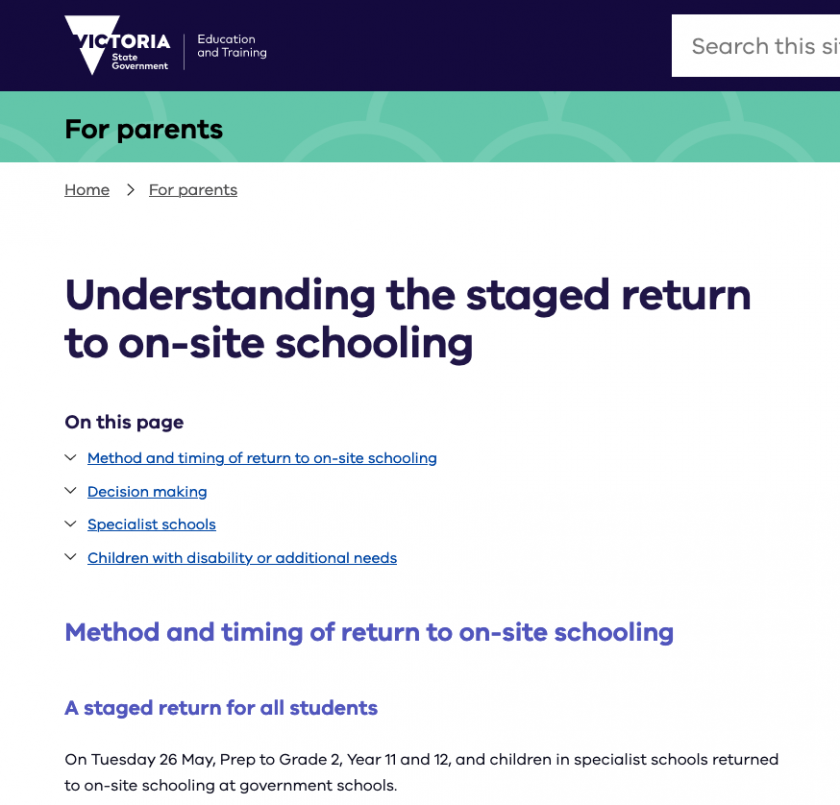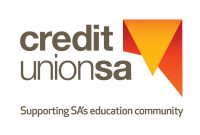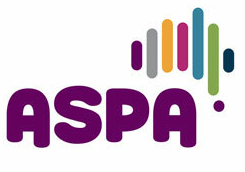
Covid 19: compromised schooling and the true nature of educational disadvantage
16th June 2020
This second essay on the impact of Covid 19 looks beyond the immediate jurisdiction of South Australia to examine the impact of home or remote schooling on overall educational outcomes. It focuses attention on the broad challenge of educational disadvantage and considers why the negative impacts associated with the withdrawal of conventional, mainstream schooling have been concentrated on those children and young people already disadvantaged. It is structured round two basic questions:
1. To what extent has the remote or home schooling necessitated by Covid 19 compromised education for children and young people?
2. Why has the negative impact been harder on those already disadvantaged?
1. To what extent has the remote or home schooling necessitated by Covid 19 compromised education for children and young people?
This is a question that has dominated discussion on the effects of home schooling around the world. Admittedly, in our own jurisdiction where the extent of home schooling was limited, the true impact of such schooling was not realised. However, it was clear that there were going to be significant issues, in terms of student access and also the quality and effectiveness of such teaching, if South Australia were required to move significantly in this direction. It makes sense therefore to consider what has happened in other jurisdictions.
What emerges very clearly is that there have been significant negative impacts and these impacts have been experienced most acutely by those groups in society that were already disadvantaged. In short, the required shift to home or remote schooling has served to accentuate existing educational disadvantage.
At the same time, the impact has also highlighted how essential conventional, mainstream schooling is in addressing educational disadvantage, in its many forms. Moreover, the experience has reinforced the importance of the state school, not just in reducing educational disadvantage but, additionally, in underpinning the essential ‘safety nets’ of what we take to be a fair and productive society.
The broad issue has been very prominent in the world’s press. For example, CNN ran a story (22/4/20) under the heading, 90% of the world’s students are in lockdown. It’s going to hit poor kids much harder than rich ones.
The gist of the article was that the impact of home schooling was bound to accentuate existing levels of educational disadvantage:
Across the globe more than 1.5 billion students, or more than 90% of the world’s learners, are stuck at home due to school closures in about 190 countries, according to UNESCO estimates. As educators scramble to put out online learning courses in a bid to teach young people remotely, experts CNN talked to from Asia, Africa, Europe and the US fear the coronavirus crisis is amplifying educational inequality — putting low-income students at a greater disadvantage than their wealthier peers.
In the US, the negative impacts of home schooling have been emphasised. For example, consider the following from The Washington Post (Laura Meckler, Valerie Strauss and Joe Heim) on 13/4/20. Admittedly, the situation in the US has changed markedly since then – 2 months ago – but the problem was obviously acute at the time and the longer-term implications are still to be worked through. The headline of the piece was Millions of public school students will suffer from school closures, education leaders have concluded and the description of the basic problem was clear:
Only weeks after the coronavirus pandemic forced American schools online, education leaders across the country have concluded that millions of children’s learning will be severely stunted and are planning unprecedented steps to help them catch up.
“We have to have a recovery plan for education,” said Eric Gordon, chief executive for the Cleveland Metropolitan School District. “I’m really worried that people think schools and colleges just flipped to digital and everything’s fine and we can just return to normal. That’s simply not the case.”
Just a month ago, most American children were attending school as normal. Today, virtually every U.S. school building is closed. Seventeen states have ordered campuses shuttered through this academic year, another three recommend it, and educators and parents across the country are bracing for a lost spring — and maybe more.
Whenever schools return, researchers say, the likely result is a generation of students forced to play catch-up, perhaps for years to come. Most vulnerable are those who are always the most vulnerable: homeless children, those living in deep poverty and students with disabilities. …
In some districts, the problem is just getting kids to show up.
In the Los Angeles Unified School District, the country’s second-largest system, 1 in 4 students have not logged on at all. Older students were more likely than elementary children to be connected, but on any given day in one recent week, a quarter of high school students didn’t log in.
This particular account also identifies the range of possible strategies to make up for the education missed. Some of the possibilities explored included: a ‘one-month summer school for vulnerable kids’; the introduction of a ‘longer school day or school year’; and the plan to ‘channel thousands of additional students into existing summer enrichment programs that focus on topics such as science and the arts’. There was even a suggestion to ‘hold back all students in high-poverty elementary schools’. This particular proposal was not popular, on obvious grounds:
That idea was rejected by many educators, who said it was akin to punishing children for being poor and unfair to children at low-income schools who are ready to advance. Still, holding kids back is on the table: Many districts are planning to determine who moves on based on work done before schools closed.
As indicated, The Washington Post article was from mid April, but the following from the The New York Times (Dana Goldstein) was from June 6, suggesting that the basic issue remains very relevant.
Research Shows Students Falling Months Behind During Virus Disruptions. The abrupt switch to remote learning wiped out academic gains for many students in America, and widened racial and economic gaps. Catching up in the fall won’t be easy
One of the claims is that students have lost up to the equivalent a ‘full school year’s worth of academic gains’. Also, the pre-existing ’racial and socioeconomic achievement gaps’ have been made worse.
While a nation of burned-out, involuntary home schoolers slogs to the finish line of a disrupted academic year, a picture is emerging of the extent of the learning loss among children in America, and the size of the gaps schools will be asked to fill when they reopen.
It is not pretty.
New research suggests that by September, most students will have fallen behind where they would have been if they had stayed in classrooms, with some losing the equivalent of a full school year’s worth of academic gains. Racial and socioeconomic achievement gaps will most likely widen because of disparities in access to computers, home internet connections and direct instruction from teachers. …
The article further detailed attempts to quantify the degree of the educational loss. The claims about differentiated loss are even set against racial groupings.
When all of the impacts are taken into account, the average student could fall seven months behind academically, while black and Hispanic students could experience even greater learning losses, equivalent to 10 months for black children and nine months for Latinos, according to an analysis from McKinsey & Company, the consulting group.
While the reasons behind the ‘learning loss’ are both complex and many – it is clearly far more than simply the ‘digital divide’ – it is apparent that the loss is concentrated in groups already disadvantaged.
The issue of ‘learning loss’ has been less prevalent in the Australian context and, obviously, in the specific SA context it has hardly rated because the shift to home or remote schooling was so limited. At the same time, in Australian jurisdictions – for example, Victoria – where there was a significant reliance on home schooling, some of the US findings appear to have been repeated. For example, the following came from The Age (Fergus Hunter) on 3/5/20:
Experts say half of students at risk from long-term remote learning
Almost half of Australia’s students will have their educational outcomes damaged if existing remote learning arrangements continue long term, according to an expert group convened by Australia’s chief scientist.
The Rapid Response Information Forum, chaired by chief scientist Alan Finkel and involving 35 research and science bodies led by the Australian Academy of Science, was commissioned by the federal government to provide advice on school operations during the coronavirus pandemic.
Its report to federal Education Minister Dan Tehan came as 1289 non-government schools took up the government’s offer of a funding incentive to return to classrooms by the end of May.
The forum analysed research on the impact of online learning on education outcomes and found the limited available evidence suggested “an extended period of remote learning is likely to result in poorer educational outcomes for almost half of Australian students”.
Again, the negative impact would be concentrated in the groups that were already disadvantaged:
The peer-reviewed report found students from low socioeconomic backgrounds, Indigenous students, those with English as a second language, those with special learning needs, and rural and remote students were at particular risk of losing out from remote learning.
Some commentators have even attempted to put a financial cost on the ‘education loss’ or the cost of ‘foregone knowledge and skills’. For example, The Age ran another article on 10/5/20 with the headline: Wellbeing hit: modelling reveals huge cost of school closures. In the article there were attempts to give a figure for the size of the Australia-wide reduction in schooling quality – 20 per cent – and its equivalent financial cost: $6 billion a quarter. The modelling itself might be problematic but, again, there is the important recognition that the effect will be concentrated in those groups already disadvantaged.
A decline in schooling quality caused by coronavirus-related disruptions will cost Australia the equivalent of $6 billion a quarter in foregone knowledge and skills.
A special edition of the Herald/Age-Lateral Economics Wellbeing Index estimates the hurried switch from classroom education to lessons at home will cause a temporary reduction in schooling quality of 20 per cent.
The modelling shows school-age children will forego $6.3 billion a quarter in human capital development, a measure of collective abilities and knowhow. Students from disadvantaged backgrounds will be worst affected.
Other attempts to put a figure on the size of the education loss in the Australian context have included a very recent (15/6/20) study in The Conversation (Julie Sonnemann and Peter Goss) entitled, Disadvantaged students may have lost 1 month of learning during COVID-19 shutdown. But the government can fix it. The piece gave a rate for the growing education disadvantage experienced by disadvantaged students under remote schooling:
Despite massive efforts by teachers and schools during the remote learning period, many students are likely to have learnt less than they would have in the classroom. Most of these students will recover without too much trouble, but disadvantaged students will need extra help.
Our new report, COVID-19 catch-up: helping disadvantaged students close the equity gap, shows the achievement gap between disadvantaged and advantaged students widens at triple the rate in remote schooling compared to regular class.
Even if remote learning worked well, disadvantaged students are likely to have learnt at about 50% of their usual rate. This means they would have lost about one month of learning over two months of remote schooling.
The piece also includes a breakdown of the reasons why ‘low SES’ students are more likely to be disadvantaged by remote schooling. It presents a clear picture of the relative incidence, between low and high SES groupings, of the range of supports that go to make up ’education capital’.
The report from the Grattan Institute – COVID catch-up: helping disadvantaged students close the equity gap – which is the basis for the piece in The Conversation calls for a specific strategy:
Australia should launch a $1 billion, six-month tutoring blitz to help 1 million disadvantaged school students recover learning lost during the COVID-19 lockdowns.
Governments should send a battalion of 100,000 tutors into schools between now and Christmas to conduct intensive small-group sessions on reading and maths. …
About 1 million disadvantaged students should attend tutoring sessions three-to-five times a week for up to three months, in groups of about three, either during regular school hours or before or after school.
Done well, these sessions could boost their learning by five months between now and the end of the year.
It is also important to acknowledge that remote schooling has worked for some students. Indeed there have been stories about students and parents being more successful with remote schooling than the previous conventional form of schooling. Also, we know that schools, under great pressure, put in enormous efforts to manage the transition to remote schooling and were proud of what they were able to put in place to support students.
In late May (24/5/20), The Age ran a story under the headline: Students less distracted and do better work remotely, teachers say. It was based on a study run by the University of Melbourne Graduate School of Education. The picture it presented was very positive:
Students have been less distracted while learning remotely and produced a better standard of work than normal in many cases, a national survey of teachers has found.
The 1100 teachers who participated in the survey, run by the University of Melbourne’s Graduate School of Education, said there had been a significant drop in disruption to lessons while learning remotely, at both primary and secondary level.
“It has been observed that student engagement has improved for students who would normally be disruptive and for those students who would be impacted by disruptions in class,” the preliminary report said.
Students “have been more likely to seek assistance where they avoided this in the classroom setting”, while “some socially anxious students are more engaged away from the physical classroom”, the report found.
The standard of students’ work also improved, although teachers said it was possible this was due to parents having more input.
Teachers also reported that parents and carers had become more aware of their children’s strengths and weaknesses and that relationships between schools and families had strengthened.
Clearly, there were instances where remote schooling worked and certainly the perceived strengths of such schooling need to be acted on. However, the same report also noted the significant shortcomings of remote schooling and, once again, there was a very different set of outcomes for those students already disadvantaged:
But not everything was rosy about remote learning, the report found.
The survey raised concerns that some students have not engaged with school at all since being sent home in March in response to COVID-19, refusing to turn on cameras and being impossible to contact despite persistent attempts.
Others have been hobbled by severely limited access to technology, with some students “spending all day engaging with remote learning using only a phone”.
There are fears that disadvantage has only increased among children who are already at risk of falling behind.
“Issues of equity were raised for a range of reasons, including parental support, access to resources and devices, and reliable internet,” the report said.
“Teachers fear that the current situation will have the most negative impact on vulnerable students.”
2. Why has the negative impact been harder on those already disadvantaged?
The pandemic has reminded us of the complexities associated with disadvantage in society. We tend to compartmentalise disadvantage and tackle it by sector, whether this is health, education, employment or police and justice. Specifically in relation to education, we have achieved a great deal. We have always been committed to the principle that the quality of education offered should not depend on the school attended. So we try to create a level playing field by ensuring that our system of state education is of universal high quality. The teachers serving students in the most disadvantaged community should be of the same quality as those serving the most advantaged. Similarly the curriculum should be consistent and the same should also apply for the physical resources and related support services etc.
At the same time, we are acutely aware that students’ lives outside the school can dramatically affect their opportunities to succeed at school. As good as we can make school, it is what students bring or don’t bring to their schooling that makes a significant difference to their chance of success. This is the point where it it is important to start talking about the ‘education capital’ the family has to support the child or young person at school.
The concept of education capital takes in not just ‘hard’ resources, like for example those relating to the ‘digital divide’, but also ‘soft’ – but still very powerful – influences like parental support and encouragement and, indeed, the parents’ own educational background. Overall, the pandemic has most definitely re-focused our attention on the student’s life outside of school.
To focus attention on one specific case of a background inequality or disadvantage that affects children and young people, consider the question of food or, more specifically, the provision of food via public school systems.
In the US, the significance of what widespread school closures meant in terms of students’ access to meals became apparent very quickly. The following is from Vox 28/3/20. The piece appeared under the heading – How US schools are (and aren’t) providing meals to children in the Covid-19 crisis. Parents rely on schools for children’s meals. Coronavirus has exposed the vulnerabilities of these programs. The numbers involved appear staggering:
In an effort to keep children safe from the coronavirus pandemic, schools in the United States have shut down. Teachers have had to adapt by going online with classes to keep kids on schedule with their education, and other forms of distance learning — teachers holding office hours by phone, the distribution of learning packets, etc. — are being implemented. Essentially, educators are finding ways to ensure kids don’t need to go to a physical building to get schooled.
But there’s at least one big problem this presents.
Many students around the country rely on schools to provide free or low-cost meals. These meals — which speak to the country’s larger problem of income inequality — are a necessary staple for many families across the country.
On a typical school day, the National School Lunch Program provides low-cost or free lunches to 29.7 million children. In New York City, the Department of Education offers free breakfast, lunch, and after-school meals to public school students during the school year. These low-cost and free options are even more imperative considering the record-shattering unemployment spike in the US.
In the UK, the figures appear to be as bad, if not worse. The following appeared in the Independent on 30/3/20 under the headline:
It will take a lot more than vouchers to stop thousands of children going hungry this summer
Help The Hungry: While the government has taken some positive steps to address food provision during this crisis, including food deliveries and vouchers, it’s not nearly enough
While all parents across the UK are worrying about how to home-school their children, many will also be worried about how they are going to feed them over the next six months.
In the UK, one in three (4.2 million) children live below the poverty line, with many finding their safety net falling away as schools shut down. Schools provide much more than education – for many children, it’s the one safe space they have and, crucially, where they’ll get one good meal a day.
Two million children in England do not have access to the food for a healthy diet – the coronavirus pandemic will only make this situation worse. With children at home more, families are finding it difficult to buy healthy food on a budget and may lack awareness of healthy diets – and may also be facing job insecurity. Many families are struggling to feed their children properly.
In terms of Australia, the following from an article in The Conversation (27/3/20) covered the same issues. It was written when it appeared that virtually all Australian schools would be moving to on-line learning. Importantly, there are many schools in our own system that run equivalent ‘breakfast clubs’ and such.
Schools provide food for many hungry children. This needs to continue when classes go online.
For children, school is about more than just learning. This is even more the case for children living in disadvantage as many schools also provide vital food and a welcoming environment.
As the COVID-19 pandemic spreads across the world, many schools are closing and fewer children are attending. In term two, it seems, most Australian schools will be moving online.
We must consider how to replicate the physical, nurturing environments of schools for children living in poverty.
Breakfast clubs at school
As many as one in five children in Australia start the school day without eating breakfast. About 15% arrive at school without lunch, or the money to buy it at the canteen. …
Adequate nutrition is important for childhood learning and development. Research shows children who have access to breakfast at school have improved concentration, engagement, focus and academic outcomes compared to those who don’t.
Many schools across Australia have set up breakfast clubs, or have emergency food and lunches for children who might otherwise go hungry. These programs are not consistent across Australia though, with some funded by schools, and others through food agencies or state governments.
The Victorian government, for instance, spent A$13.7 million on breakfast clubs from 2016 to 2019. As a result, students in around 500 of Victoria’s most disadvantaged primary schools have had access to nutritious food.
The Victorian government committed a further $58 million to expand the program to 1,000 schools in the state from 2019 to 2023, providing free lunches and holiday food supplies to many schools that never had them before.
More than just food and nutrition
But breakfast clubs are about more than just nutrition. They provide opportunities for schools to engage with children and develop relationships that help students achieve a sense of connection.
They are about creating nurturing and caring spaces for children and making them feel safe and welcome, even before they start their school day.
The general issue of food offers just one lens for viewing the complex relationship between the state school and the broader nature and incidence of disadvantage beyond the school.
While the basic issue of food is a striking example of the relationship, the pandemic has also focused attention on other, often less apparent, problems. For example, and again from the US, one critical issue revolves round the reality that for many students the school is a safe, secure and supportive environment. It can act as a place of refuge in a dangerous world. The following extract is from an article in the US on-line publication, Intelligencer (21/3/20). The headline was, NYC’s School Closures Are a Crisis of Their Own for Disadvantaged Families
Amid pressure from some parents, elected officials, and the teachers’ union, Mayor Bill de Blasio announced last Sunday that it was time to take “more drastic measures” and closed schools across the city. Neighboring school districts in Long Island and Westchester County closed their doors as well. But for low-income families (about 73 percent live in poverty), 114,000 homeless students, undocumented students, and English-language learners, school closures are a cataclysmic event. It isn’t that those impacted wish for schools to remain open during a pandemic, but the realities of life without a safe place for kids to go and learn reveal how integral the school system is for New York City’s most vulnerable and how so many social safety-net measures are tied to it.
The biggest school system in the country is now struggling to create a new normal, where the needs of New York City’s most unprotected residents are taken care of.
And then there is the issue of safety. For families who live in low-income neighborhoods with a heavy police presence, an age-old anxiety arises around whether children will be intimidated or arrested for just being outside. …
Clearly, just being able to ‘go to school’ takes on additional significance.
It is interesting to compare this piece with another from The New York Times (15/5/20) by Kevin Quealy entitled, The Richest Neighborhoods Emptied Out Most as Coronavirus Hit New York City. Essentially, while the pandemic compromised the safety and security of disadvantaged families by closing schools and confining students to their immediate neighbourhood, the more affluent New Yorkers were able to flee New York altogether. It was a classic example of disadvantage creating further disadvantage while, in response to the same, common crisis, the affluent were able to buy safety.
Hundreds of thousands of New York City residents, in particular those from the city’s wealthiest neighborhoods, left as the coronavirus pandemic hit, an analysis of multiple sources of aggregated smartphone location data has found.
Roughly 5 percent of residents — or about 420,000 people — left the city between March 1 and May 1. In the city’s very wealthiest blocks, in neighborhoods like the Upper East Side, the West Village, SoHo and Brooklyn Heights, residential population decreased by 40 percent or more, while the rest of the city saw comparably modest changes. …
Relatively few residents from blocks with median household incomes of about $90,000 or less (in the 80th percentile or lower) left New York. This migration out of the city began in mid-March, and accelerated in the days after March 15, when Mayor Bill de Blasio announced that he was closing the city’s schools.
The highest-earning neighborhoods emptied first.
“There is a way that these crises fall with a different weight on people based on social class,” said Kim Phillips-Fein, a history professor at New York University and author of a book about how New York changed during the fiscal crisis of the 1970s. “Even though there’s a strong rhetoric of ‘We’re all in it together,’ that’s not really the case.”
And just to emphasise that there were significant, real-life consequences associated with socio-economic status, place of residence and the ability to remove the family from the centre of the epidemic, the following article from The Hill (18/5/20) gave an overview of comparative infection and death rates from Covi-19 in New York. It was headed, New figures show stark disparities in coronavirus deaths across NYC neighborhoods.
New data released Monday shows stark disparities in coronavirus death rates across New York City neighborhoods.
The New York City Health Department for the first time released data on coronavirus deaths broken down by the city’s more than 60 ZIP codes, showing that some neighborhoods are experiencing death rates almost 15 times higher than others.
The data demonstrates the COVID-19 pandemic has been deadliest in black and Latino neighborhoods, according to analysis by Reuters.
The highest death rate was documented in Canarsie-Flatlands in Brooklyn, an area with a subsidized housing development, where 612 in 100,000 people died from the virus.
In Gramercy Park, a primarily white and wealthy neighborhood in Manhattan, 31 deaths per 100,000 people were recorded. In Far Rockaway in Queens, which has a 40 percent black and a 25 percent Latino population, there were 444 deaths per 100,000 people. …
Mark Levine, the chairman of the City Council’s health committee, told Reuters in an interview that black and Latino residents are more likely to have low-paid, essential jobs putting them at risk of contracting the virus.
He added that these populations are more likely to live in smaller, more crowded apartments and have underlying health conditions.
“It’s really heartbreaking and it should tug at the moral conscience of the city,” he told Reuters. “We knew we had dramatic inequality. This, in graphic form, shows it’s even greater than maybe many of us feared.”
The relative impact of the pandemic illustrates the entrenched, inter-related facets of disadvantage in contemporary society. Disadvantage defines people’s lives and, literally, their life chances.
One final insight of how the withdrawal of mainstream schooling exacerbates existing disadvantage comes from another piece from The New York Times. It was headed, In a World ‘So Upside Down,’ the Virus Is Taking a Toll on Young People’s Mental Health. It was written by Dan Levin and appeared on 20/5/20. While this particular impact will again most affect those students already disadvantaged, it is clear that children and young people across the entire school population will also be affected.
The shuttering of the American education system severed students from more than just classrooms, friends and extracurricular activities. It has also cut off an estimated 55 million children and teenagers from school staff members whose open doors and compassionate advice helped them build self-esteem, navigate the pressures of adolescence and cope with trauma.
Desperate to safeguard students’ emotional well-being amid the isolation and financial turmoil of the coronavirus pandemic, teachers are checking in during video classes, counselors are posting mindfulness videos on Facebook and school psychologists are holding therapy sessions over the phone.
But the challenges hard-wired into online learning present daunting obstacles for the remote guidance counselor’s office, particularly among students from low-income families who have lost jobs or lack internet access at home. And mental health experts worry about the psychological toll on a younger generation that was already experiencing soaring rates of depression, anxiety and suicide before the pandemic.
Overall
It appears that there are several critical insights to take from the experience of the widespread closure of mainstream schooling across the world. Home schooling or remote schooling lowers overall education outcomes and, most tellingly, accentuates educational disadvantage for those already at risk or disadvantaged in mainstream education.
The experience also highlights just how important the conventional, mainstream (state) school is in directly addressing both educational disadvantage and the other forms of disadvantage sitting behind it. Removing access to such schooling can have dire consequences beyond the school room and school yard.
In a real sense, the pandemic reminds us of how for many decades we have worked to ensure that the local state school serving its community represents the most level educational playing field we can construct. The pandemic has forcefully reminded us of the importance of the state school as, arguably, the key lever we have to effect social change that limits disadvantage and promotes a fairer and more productive society.
At the same time, the pandemic has also demonstrated how entrenched and complex disadvantage in its broadest sense remains in the wider society. It has focused our attention on the extent and nature of disadvantage beyond the school that significantly limits the ability of the school to create the desired level playing field. It has forced us to locate our understanding of educational disadvantage within this broader perspective. Schools serving disadvantaged communities have always known this truth; but the pandemic has thrown it into sharper focus for everyone.


















